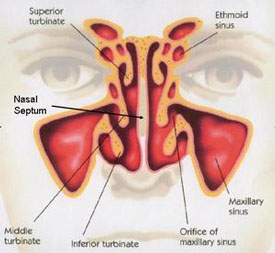Evaluation of Heavy Snoring

The noisy sounds of snoring occur when there is an obstruction to the free flow of air through the passages at the back of the mouth and nose. This area is the collapsible part of the airway where the tongue and upper throat meet the soft palate and uvula. Snoring occurs when these structures strike each other and vibrate during breathing.
In children, snoring may be a sign of problems with the tonsils and adenoids.
Why is Snoring Serious?
- Socially – Snoring can make the snorer an object of ridicule and can cause the bed partner to experience sleepless nights and fatigue.
- Medically – It disturbs sleeping patterns and deprives the snorer of adequate rest. It may be a sign of obstructive sleep apnea (OSA), which can lead to severe and long-term health problems.
How is Snoring Evaluated?
Heavy snorers should seek medical advice to ensure that sleep apnea is not a problem. Heavy snorers include people who snore regularly in any position or who negatively impact a bed partner’s sleep. Dr. Liess will provide a complete examination of the nose, mouth, throat, palate, and neck, and may use a fiberoptic scope. This may reveal if the snoring is caused by nasal allergy, infection, nasal obstruction, or enlargement of tonsils and adenoids. A sleep study in a laboratory or at home may be necessary to determine if snoring is related to OSA.
All snorers with any of the following symptoms should be evaluated for possible obstructive sleep apnea:
- Witnessed episodes of breath pauses or apnea during sleep
- Daytime sleepiness or fatigue
- High blood pressure
- Heart disease
- History of a stroke
Treatments
Treatment depends on the diagnosis and level(s) of upper airway narrowing. In some cases, more than one area may be involved.
Snoring or Sleep Apnea may respond to various treatments:
- Non-Surgical Treatment
- Depending on the cause of your snoring and presence of sleep apnea, Dr. Benjamin Liess might utilize a range of treatment plans to help you sleep better at night. Non-interventional approaches such as an improved diet with weight loss, dental devices, bed alterations, and changes in sleep position may help. A sleep study may be recommended to determine the severity of your sleep apnea. Many individuals with sleep apnea find success through using a CPAP machine at night, which opens the airways with a small amount of pressure. Obstructive sleep apnea is most often treated with a device that opens the airway with a small amount of positive pressure. This pressure is delivered via a nasal mask worn during sleep. This treatment is called CPAP; it is currently the initial treatment of choice for patients with OSA.
- Patients who fail CPAP or are unable to tolerate the treatment may be candidates for surgery.
- Surgical Treatment
- Uvulopalatopharyngoplasty (UPPP) is surgery for treating snoring and obstructive sleep apnea. It removes excess soft palate tissue, tightens the pharynx and opens the airway. In addition, the remaining tissue stiffens as it heals, thereby minimizing tissue vibration. The size of the air passage may be further enlarged when a tonsillectomy is added to the procedure.
- A custom-fit oral appliance, which repositions the lower jaw forward, may also be considered for individual patients with snoring/ OSA. This should be fitted by a dentist or oral surgeon with expertise in sleep dentistry.
- In some patients, significant weight loss can also improve snoring and OSA.
- In patients with nasal and sinus conditions, these may need to be treated as well to provide a more effective treatment result.
Call Benjamin Liess MD at (207) 415-4841 for more information or to schedule an appointment.